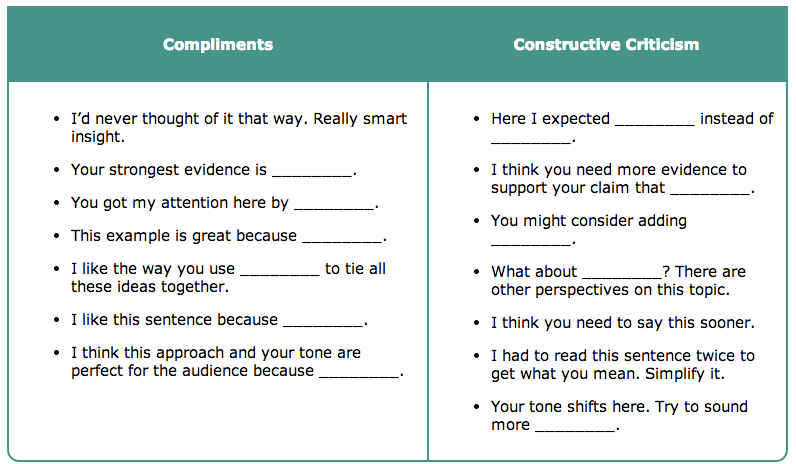Responding to intermediate-stage drafts
Writers of intermediate-stage drafts need to know where their contextual-analysis examples lack sufficient clarity, what ideas confuse readers, and how their approach misses the assignment goals. They also need to know which parts of their drafts are clear and well written.
Topic sentences and transitions. Topic sentences introduce the idea of a paragraph, and transitions move the writing smoothly from one paragraph or section or idea to the next (5b, d, and e). How well does the draft prepare readers for the next set of ideas by explaining how they relate to the overall claim? Look for ideas or details that don’t seem to fit into the overall structure. Is the idea or detail out of place because it is not well integrated into this paragraph? If so, recommend a revision or a new transition. Is it out of place because it doesn’t support the overall claim? If so, recommend deletion.
Supporting details. Well-developed paragraphs and arguments depend on supporting details (5c). Does the writer include an appropriate number and variety of details? Could the paragraph be improved by adding another example, a definition, or a comparison or contrast?
Do you see any words, terms, or concepts that might benefit from an OED search? Sometimes a word’s history, etymology, and shifting meanings over time can add substantially to context. Are there places where the writer can narrow or broaden research? Is the writer writing in a compelling, professional, explanatory, or exploratory tone?

